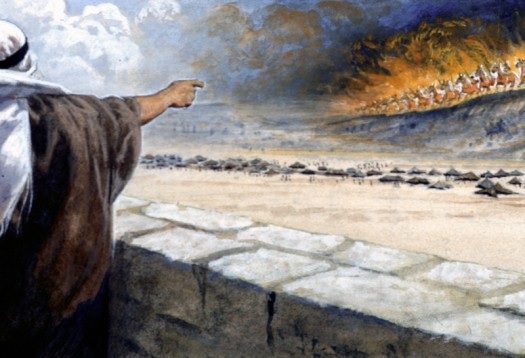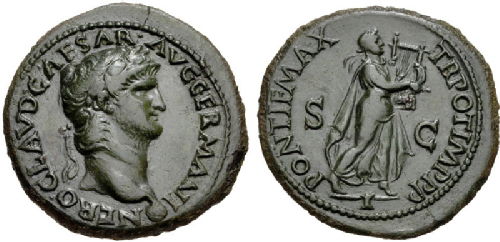
Biblical Evidence for the 1st Century Return of Christ
… parousiafulfilled.com
The Book of Revelation is “the revelation” [Gk: ἀποκάλυψις : apocalypsis] “of Jesus Christ”, revealing his divine majesty and power, and his final victory over the forces of evil. It “uncovers” and “reveals” divine themes and mysteries, previously hidden from the eyes of men, using prophetic visions, symbols and figurative language. As J.S. Russell I explains: “prophecy is poetry, and Oriental poetry also, in which gorgeous symbolical imagery is the vesture of thought” 1 . In other words, the Apocalypse employs Hebrew hyperbole and symbolism, in an attempt to convey the awesome gravity and significance of the divine judgements on men and angels.
Edward E. Stevens 2 explains that, in order to understand and interpret Bible scriptures, “… we need to first acquaint ourselves with the history, culture, language, religion and politics of the times in which the book was written.”
The primary audience of New Testament (NT) scriptures, including the Apocalypse, was the 1st Century believers who lived in ancient Judea: a province of the Roman Empire, during the earthly ministry of Jesus. Although there is no specific “date‐stamp” in the Apocalypse, the author gives us some indication, when he says:
“I, John, your brother and PARTNER IN THE TRIBULATION and the kingdom and the patient endurance that are in Jesus, was on the island called Patmos”. (Rev 1:9 ~ my caps)
Apostle John, a contemporary of Jesus, was imprisoned by the Roman authorities on the prison island of Patmos, and he informs his readers that he is suffering the same “tribulation” as them. This was likely just before the most severe trials and sufferings which were ABOUT TO COME (Read more about the “Great Tribulation” in Part 2).
This article examines the Biblical and historical evidences, that indicate a fairly specific “Date of Revelation”. For reader ease, the article is split into two parts.

A very noticeable feature of the Apocalypse, and all other NT Books, is that they are missing any substantive mention or details about major historical events and calamities, which occurred during the 7 years heptad from AD 64 to 70. For instance:
1. The Great Fire of Rome (AD 64), and Emperor Nero’s subsequent persecution and mass murder of Christians throughout the Roman Empire, during the last years of his reign (AD 64 to 68).
2. Nero’s suicide by his own dagger (June AD 68).
3. The Jewish rebellion against Rome (AD 65), which led to war with Rome (AD 66 to 74).
4. Vespasian’s invasion of Judea with massive armies (AD 67).
5. Titus’ bloody siege of Jerusalem (AD 70).
6. The shocking famine and cannibalism that occurred in Jerusalem as food supplies were deliberately burned and exhausted by gangs of Jewish zealots, as well as their brutal and abominable acts of wholesale slaughter of both combatants and innocent civilians (AD 70).
7. The massive death toll of 1.1 million Jews, trapped in Jerusalem, and gradually slaughtered by Romans and Jewish zealots, during the siege (AD 67 to 70).
8. The subsequent capture of hundreds of thousands of Jewish survivors, who were then sold into slavery in the mines of Egypt, or sent to fight and die in the Colosseum and other arenas throughout the Empire (AD 70).
9. The utter destruction of all the magnificent edifices in Jerusalem during the siege, including the city walls, Herod’s Palace, the Temple and the Library (including all of the archives and genealogies). Only three eminent towers and parts of the west wall survived, and were used by the Romans as military barracks for their occupation troops (AD 70).
10. The shocking fact that the Romans ploughed the city and flattened it to the ground (apart from three towers and part of the west wall) (AD 70).
11. The complete obliteration of Old Covenant (OC) Israel, including the Temple, animal sacrifices, priests, Mosaic Law, records and genealogies (AD 70+).
No historian, writing after these tragic events, would have failed to mention them or their grave impact on the lives of any survivors. In fact, non‐christian historians did record much detail about these events, including Cornelius Tacitus II , a 1st Century Roman historian who wrote “Histories” and “Annals": 3 and Flavius Josephus III , a 1st Century Jewish nobleman, priest and historian, who was captured by the Romans at Caesarea. Josephus was actually in the Roman camp throughout the siege and destruction of Jerusalem, and wrote extensively about it and the Jewish War 4 . He was so shocked and saddened by all the bloodshed and destruction, that he appealed to the rebels to surrender, but they refused his pleas. Afterwards, he says: “there was left nothing to make those that came thither believe it had ever been inhabited”. 5
FINDING: The Apocalypse lacks any substantive accounts of “earth‐shattering” calamities and destruction, which led to the final obliteration of the Jewish kingdom, and the city of Jerusalem, along with its magnificent Temple and Palace. In fact, none of these significant, major historical events are reported in the records of the New Testament. Therefore, this fact strongly suggests that the Apocalypse and all NT books were written before AD 64, when the first of the terrible calamities occurred, ie: the Great Fire of Rome, and Nero’s subsequent brutal slaughter of Christians.
The theme of Revelation is outlined in its seventh verse:
“Behold, he is coming with the clouds, and every eye will see him, even those who pierced him, and all tribes of the earth will wail on account of him. Even so. Amen.” (Revelation 1:7)
These words echo what Jesus prophesied in his Olivet Discourse:
“Then will appear in heaven the sign of the Son of Man, and then all the tribes of the earth will mourn, and they will see the Son of Man coming on the clouds of heaven with power and great glory.” (Matthew 24:30)

Thus, we have three vital clues as to when the Apocalypse was written:
(A) “COMING WITH THE CLOUDS”.
This “clouds” phrase uses Hebrew prophetic language to convey the awesome majesty and power of God’s divine presence and judgement. It is a warning to the reader that Christ is about to come with the same divine power, just as prophesied in Daniel’s vision hundreds of years earlier:
”… and behold, with the clouds of heaven there came one like a son of man” (Daniel 7:13)
Here are more examples of “cloud” imagery, used to denote divine power, in the Old Testament:
“The Lord reigns, let the earth rejoice: let the many coastlands be glad! Clouds and thick darkness are all around him: righteousness and justice are the foundation of his throne.” (Psalm 97:1‐2)
“he makes the clouds his chariot: he rides on the wings of the wind:” (Psalm 104:3)
“Behold, the Lord is riding on a swift cloud and comes to Egypt:” (Isaiah 19:1)
“Behold, he comes up like clouds: his chariots like the whirlwind: his horses are swifter than eagles — woe to us, for we are ruined!” (Jeremiah 4:13)
“For the day is near, the day of the Lord is near: it will be a day of clouds, a time of doom for the nations.” (Ezekiel 30:3)
“His way is in whirlwind and storm, and the clouds are the dust of his feet.” (Nahum 1:3)
“A day of wrath is that day, a day of distress and anguish, a day of ruin and devastation, a day of darkness and gloom, a day of clouds and thick darkness,” (Zephaniah 1:15)
(B) “EVEN THOSE WHO PIERCED HIM”
This phrase alludes to those who crucified Jesus. Although it was Roman soldiers who flogged and crucified Jesus, they were not the ones who demanded his death. It was Caiaphas and the chief priests, scribes and elders of the Sanhedrin Council who “… made plans to put him to death” (John 11:53). It was they who bribed Judas Iscariot to betray him. It was they who arrested him, tried him, falsely accused him and condemned him to death. Then they perfidiously handed him over to the Romans for execution, saying: “It is not lawful for us to put anyone to death” (John 18:31, also Numbers 35:33: Deuteronomy 19:10, 13: 27:25).
Pontius Pilate, the Roman Governor, examined Jesus and concluded: “I find no guilt in him” (John 18:38), but Caiaphas and the council pressured him, saying: “If you release this man, you are not Caesar’s friend” (John 19:12). When Pilate tried to release Jesus, the chief priests, the rulers and the people cried out: “Crucify him! Crucify him!” (Luke 23:21). Pilate “washed his hands”… ‘and all the people answered, “His blood be on us and on our children!”’ (Matt 27:25).
Jesus also confirmed their guilt for shedding his innocent blood:
”… YOU seek to kill me because my word finds no place in you. … but now YOU seek to kill me, a man who has told you the truth that I heard from God.” (John 8:37,40)
Apostles Peter also accused them:
“this Jesus, delivered up according to the definite plan and foreknowledge of God, YOU crucified and killed by the hands of lawless men.” :(Acts 2:23);
”… God has made him both Lord and Christ, this Jesus whom YOU crucified.” (Acts 2:36)
Stephen, “full of grace and power” also accused them, just before he himself was stoned to death:
”… the Righteous One, whom YOU have now betrayed and murdered” (Acts 7:52)
Apostle Paul accused them as well:
“who killed both the Lord Jesus and the prophets, and drove us out, and displease God and oppose all mankind” (1 Thess 2:15).
Obviously, the phrase: “EVEN THOSE WHO PIERCED HIM” refers to the chief priests, rulers and people who instigated and demanded Jesus’ death. Thus, the theme verse is saying that some of them would live to see his glorious and awesome parousia return on the clouds of heaven.
(C) “ALL THE TRIBES OF THE EARTH”
The original Greek text is “πᾶσαι αἱ φυλαὶ τῆς γῆς”. The word “φυλαὶ” (phulai) means: tribes, ie: “the persons descended from one of the twelve sons of the patriarch Jacob” 6 . The word “γῆς” (ges) means “land” rather than the planet earth. Thus, the phrase is actually referring to: “all the descendants of Jacob in the land of Israel”. It is not referring to every human being or the entire planet Earth.
FINDING: We can now perceive the message of Rev 1:7: … Christ was about to come with awesome divine judgement, and every person in the land, at that time, would see him, especially the chief priests, rulers and people who rejected and crucified him. All the tribes of the earthly nation of Israel would wail on account of him.
Therefore, this strongly suggests that the Apocalypse was written before the final demise of the priests, rulers and people who crucified Jesus: ie: before the Romans wiped out the populace of Jerusalem, and destroyed the Temple and other great buildings in AD 70.
An important component of the Apocalypse is the vision of a strange “beast rising from the sea” … to “make war on the saints”.
“And I saw a beast rising out of the sea, with ten horns and seven heads, with ten diadems on its horns and blasphemous names on its heads. … And the beast was given a mouth uttering haughty and blasphemous words, and it was allowed to exercise authority for forty‐two months. It opened its mouth to utter blasphemies against God, blaspheming his name and his dwelling, that is, those who dwell in heaven. Also it was allowed to make war on the saints and to conquer them. And authority was given it over every tribe and people and language and nation.”(Revelation 13:1,5‐7)
If this “beast” imagery was intended to scare people at some vague future date (as some Futurists claim), then it would have been totally irrelevant to John’s primary audience, ie: the “saints” in seven real, historical churches of Asia Minor, at Ephesus, Smyrna, Pergamum, Thyatira, Sardis, Philadelphia and Laodicea (Revelation 2 & 3). Why would he waste precious parchment and ink writing about some strange “monster”, if those early Christians would never encounter it? Futurism makes no sense in this regard.
Obviously, John was warning his fellow believers about a clear and present danger ABOUT TO COME upon them, very SOON, in their lifetime. Jesus also warned his disciples, in AD 30, regarding an IMMINENT “great tribulation” (Matthew 24:21). He urged them to be ready to “flee to the mountains”, when THEY SAW the troubles approaching. (Note: he never said that unspecified people, thousands of years later, should “flee to the mountains”.)
Various scholars, including Russell 7 , Gentry 8 and Reasoner 9 view this “beast” as a real person, not an animal, spirit, angel, or abstraction. (For more information, see my article: “Who is the Beast of Revelation?”)
1.3.1 “WORSHIP OF THE BEAST “
This “beast” would also demand pagan worship, of both Satan and the beast.
‘… the whole earth marveled as they followed the beast. And they worshiped the dragon, for he had given his authority to the beast, and they worshiped the beast, saying, “Who is like the beast, and who can fight against it?”’ (Revelation 13:3,4).
“and all who dwell on earth will worship it, everyone whose name has not been written before the foundation of the world in the book of life of the Lamb who was slain” (Revelation 13:8).
1.3.2 “NUMBER OF THE BEAST ‐ 666”
John’s readers would be anxious to know who, or what, the “beast” might be, so he gives them a clue:
“This calls for wisdom: let the one who has understanding calculate the number of the beast, for it is the number of a man, and his number is 666” (Revelation 13:18).
In ancient Hebrew, names could be converted into numbers, and in this case, “666” is a number: six hundred and sixty six (not a logo or symbol), which represents someone’s name. Gentry explains that “666” is a Hebrew cryptogram… a “gematria” 10 . He says: ‘John clearly says “the number of the beast” is “the number of a man”’ 11 . Russell observes that John “meant not to puzzle, but to enlighten his readers”… “St John was a Hebrew… and his thoughts were Hebrew” 12 . John was familiar with the Hebrew form of a particular man’s name, ie: the reigning Emperor of Rome: Nero Caesar.
Gentry explains: ‘An ancient Hebrew or Aramaic spelling of “Nero Caesar”… was “Nrwn Qsr” which can be enumerated as follows:’ 13
n=50, r=200, w=6, n=50, q=100, s=60, r=200: which results in Total = 666.
Thus, the “number of the beast”… “666”… is a coded disguise for the name of a real person: the man whom John calls “the beast from the sea”, ie: Emperor Nero.
1.3.3 NERO CAESAR.
Another hint that Nero is the beastly villain is in Revelation 17:
“they are also seven kings, five of whom have fallen, one is, the other has not yet come, and when he does come he must remain only a little while” (Revelation 17:10).
Note that FIVE kings had already fallen, and one king was still reigning, ie: the SIXTH king, designated by the phrase: “ONE IS”. History records that, during John’s life, in the 1st Century AD, the most significant and powerful rulers were the Caesars: the rulers of Rome. John and other Jews recognised them as “kings”. During John’s life, the most prominent and ruthless “king” was Nero Caesar, who reigned from AD 54 to 68. He was the SIXTH CAESAR, according to Suetonius IV , a Roman historian, who listed twelve of the Caesars in order, in his history: “The Lives of the Twelve Caesars”. 14
The list of kings in Revelation concludes with this remark: “the other has not yet come, and when he does come he must remain only a little while” (v.10b). This SEVENTH king was yet to come, after Nero, but he would reign for “only a little while”. As it happens, Nero’s successor was Galba, who was assassinated in the seventh month of his reign. Galba is listed as the SEVENTH CAESAR by Suetonius14 .
1.3.4 NERO: THE WILD BEAST

Ancient historians have written a great deal about the wicked acts of Nero Caesar. Josephus 15 , Tacitus 3 and Suetonius 16 , describe him as a vile, “beastly” man, who murdered many innocent people, including his step‐brother, Britannicus (AD 55): his mother, Agrippina (AD 59): his first wife, Octavia (AD 62): his second wife, Poppaea (AD 65): his aunt, Domitia: and “many other illustrious persons”. Nero was also sexually depraved and immoral… “defiled by every natural and unnatural lust” 17 . Nero also “claimed to be God” and was engaged in “making himself equal to God” (Sibylline Oracles18 ). He claimed the title “Son of Apollos” (ie: the pagan sun god) and mobs everywhere greeted him with shouts of “Nero Apollo” 19 .
1.3.5 “GREAT TRIBULATION”
The “great tribulation”, foretold by Jesus and the Apocalypse, began soon after a massive fire destroyed most of Ancient Rome (circa July AD 64). Rumours spread that the fire was started by Nero, but he tried to scotch the rumours by blaming it on the Christians in Rome.
Tacitus recounts: “First, then, the confessed members of the sect [Christians] were arrested: next, on their disclosures, vast numbers were convicted, not so much on the count of arson as for hatred of the human race… they were being sacrificed not for the welfare of the state but to the ferocity of a single man” 3 .
Russell notes: “The duration of that first and bitter persecution accords with the period of forty and two months, or three years and a half, mentioned in the vision… Now, as a matter of fact, the persecution by Nero began in November A.D.64, and ended with his death in June A.D.68, that is as nearly as possible three years and a half.” . 20
“Every point of the description (of the beast) identifies the criminal. It was this execrable tyrant (Nero) who first let loose the hell‐hounds of persecution on the unoffending Christians of Rome. … More like a wild beast than a man…” 7 .
FINDING: John’s description and warning about a wicked “beast”, and his mention of certain kings, including one still reigning, seems to suggest a Date of Revelation, during the days of Nero Caesar. It must have been written prior to Nero’s death in AD 68, and prior to the ascension of Galba. Furthermore, it must have been prior to the Great Fire of Rome in November AD 64, when the Neronic persecution broke out. And, in order for John’s letter to the seven churches to reach them, and warn them, in time for them to “flee”, it must have been written prior to AD 64: possibly as early as AD 62 or 63. ~~ (For more information, please read: “Who Is The Beast Of Revelation?”)
Read more on the prophesied “imminence” of the parousia (“Second Coming”) of Christ in these articles:
This article is not an exhaustive survey of historical authorities and sources on this topic. Truth‐seekers will want to undertake further reading, and I recommend the following scholarly works:

I… James Stuart Russell (1816-1895) was a minister in the Congregational Church at Great Yarmouth, Tottenham, Edmonton, and Bayswater. He held to a past fulfillment of the Second Advent and in 1878 he published a book on this subject, originally entitled “The Parousia: The New Testament Doctrine of Our Lord’s Second Coming”.
Photo of J S Russell: author of “The Parousia”. Photograph, colorized by Virgil Vaduva

II… Cornelius Tacitus (circa AD 56‐120) was a Roman orator, public official and historian. He wrote “Annals”: a history of the Roman Empire from the reign of Tiberius (14 AD) to the end of Nero’s reign (AD 68). He also wrote “Histories”: a Roman historical chronicle (written c. AD 100‐110), covering the period from the fall of Nero (AD 68) to the end of Domitian’s reign (AD 96).
Bust of Cornelius Tacitus

III… Flavius Josephus (circa AD 37‐100) was a Jewish priest, scholar, historian and active participant in the final decades of ancient Israel (Judea). He was also an aristocrat, a Pharisee, a military commander and politician, who wrote extensive accounts of his life and Jewish history, including a detailed account of the Jewish War against Rome. He was an eyewitness of the horrors and abominations (which he tried to stop) during the Roman siege of Jerusalem (AD 70).
Flavius Josephus
IV … Gaius Suetonius Tranquillus (c. AD 69 – 130/140) was the son of a Roman knight who commanded a legion, on the side of Otho, at the battle which decided the fate of the empire in favour of Vitellius. Suetonius was a quiet man who first studied and practised law before becoming a professional scholar. Noted for his writing and poetry, he composed numerous works, including: “The Lives of the Twelve Caesars”. In later life, he was a director of the imperial libraries and then a private secretary to Hadrian.
Annals by Tacitus viewed 20 August 2020 at https://penelope.uchicago.edu/Thayer/E/Roman/Texts/Tacitus/Annals/13A*.html (also 14A* & 15B*)
Before Jerusalem Fell by Gentry, Kenneth L., Th. D., Victorious Hope Publishing, Fountain Inn, South Carolina, 3rd Ed. 1998.
Final Decade Before the End: Jewish and Christian History Just Before the Jewish Revolt by Stevens, Edward E. International Preterist Association, Inc. Bradford, PA 2014.
Fundamental Wesleyan Commentary on Revelation by Reasoner, Victor P., Fundamental Wesleyan Publishers, Evansville, IN 2005.
Josephus: The Complete Works, translated by Whiston, William. A.M., Thomas Nelson Publishers, Nashville, TN 1998.
The Lives of the Twelve Caesars by C. Suetonius Tranquillus; The Translation of Alexander Thomson, M.D.; Revised and corrected by T.Forester, Esq., A.M.; The Project Gutenberg EBook. Viewed 20 August 2020 at: https://www.gutenberg.org/files/6400/6400-h/6400-h.htm
The Parousia: The New Testament Doctrine of Our Lord’s Second Coming by Russell, James Stuart, International Preterist Association, Bradford PA, 2003. (Originally published by T. Fisher Unwin, London, 1887).
NB: “Unless Otherwise indicated, all Scriptures are from the Holy Bible, English Standard Version, copyright © 2001, 2007, 2011, 2016 by Crossway Bibles, a division of Good News Publishers. Used by permission. All rights reserved.”
1…“The Parousia”, J. Stuart Russell, p399.
2…“Perspectives”, article by Edward E. Stevens, International Preterist Association, Bradford, PA, Fulfilled Magazine Spring 2006 Volume 1 Issue 1.
3…“Annals”, Tacitus.
4…“Antiquities”, Josephus, 20.8.2.
5…“Wars of the Jews”, Josephus, 7.1.1, para 3.
6…From https://www.blueletterbible.org/lang/lexicon/lexicon.cfm?Strongs=G5443&t=YLT , viewed 13 August 2020.
7…Russell, op. cit. p461.
8…“Before Jerusalem Fell”, Gentry, p198.
9…“Fundamental Wesleyan Commentary on Revelation”, Reasoner, p.426.
10…Gentry, op. cit. p194.
11…ibid. p198.
12…Russell, op. cit. pp463, 464.
13…Gentry, op. cit. p199. NB: “Nrwn Qsr” derives from a Greek transliteration of Nero’s name into Hebrew. Latin translations of Revelation may have transliterated it as “Nrw Qsr” (dropping the second “n”). This then leads to a slightly different calculation:
n=50, r=200, w=6, q=100, s=60, r=200: with a result Total = 616.
Regardless of this variation, the coded number of the beast clearly points to “Nero Caesar”.
14…“The Lives of the Twelve Caesars”, by C. Suetonius Tranquillus.
15…“Antiquities” , Flavius Josephus, 20.8.2.
16…Suetonius, op. cit. Book 6.
17…Tacitus, op. cit. Book 15.
18…Gentry, op. cit. p275.
19…ibid. p272.
20…Russell, op. cit. pp460.
copyright © 2019‐2023 Kenneth Higgs ‐ ParousiaFulfilled.com ‐ v2.01